Crabapple trees are a delightful addition to any garden or landscape. With their stunning blooms and vibrant fruits, these trees visually appeal and attract pollinators, birds, and other wildlife. Whether you’re a seasoned gardener or a beginner, growing and caring for Crabapple trees can be rewarding. Growing and caring for Crabapple trees may require effort, but seeing their blossoms in springtime or enjoying their fruit in autumn makes it all worthwhile.
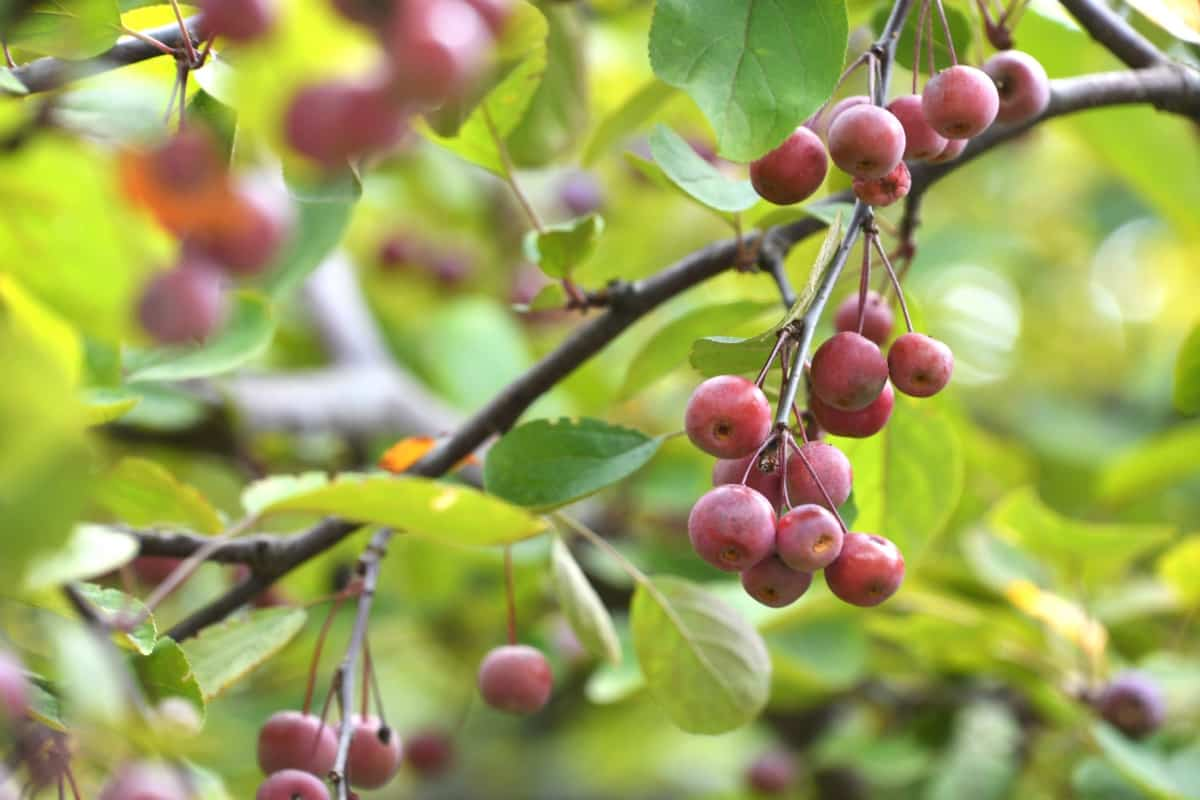
How to Grow Crabapple Trees
Understanding the Basics of Crabapple Trees
| Name | Crabapple |
| Mature Size | 20 feet tall |
| Sun Exposure | Full |
| Soil pH and type | 5.5 to 6.5, Acidic to neutral |
| Bloom Time | Late spring |
Choosing the Right Crabapple Tree Variety for Your Garden
Choosing the right Crabapple tree variety for your garden can be exciting yet daunting. Think about the size and shape of the tree you desire. Crabapple trees come in various sizes, ranging from dwarf varieties that reach only a few feet tall to larger specimens that can grow up to 20 feet tall. Consider the space you have available in your garden and choose accordingly. It’s also crucial to consider your area’s climate and growing conditions.
Different Crabapple varieties have varying levels of cold hardiness and disease resistance. Research which cultivars are best suited for your specific region to ensure their long-term health and vitality. Another factor to keep in mind is fruit production. If you’re looking for ornamental value rather than edible fruit, opt for sterile or non-fruiting varieties, as they tend to have longer-lasting blooms without messy fallen fruit cluttering your yard.
Selecting an Ideal Planting Location for Crabapple Trees
When selecting the ideal planting location for your Crabapple trees, there are a few key factors to consider. Crabapple trees thrive in full sun, so choose a spot with at least six hours of direct sunlight. In addition to sunlight, soil conditions play a crucial role in the success of your tree. Crabapples prefer well-drained soil that is rich in organic matter.
In case you missed it: Cold Frame Gardening DIY: How to Make, Plant, Grow, Advantages and Disadvantages
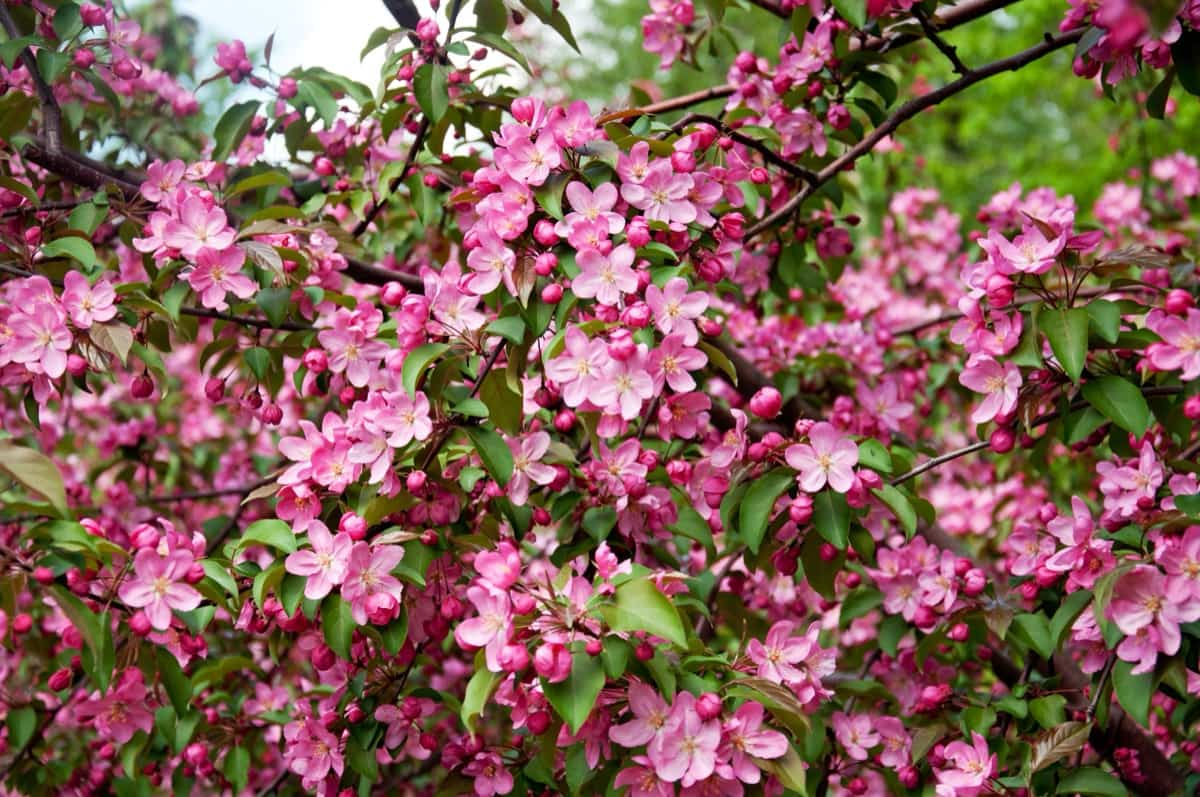
Another important consideration is spacing. How far apart is it to plant crab apple trees? Ensure you give your Crabapple tree enough room to grow and spread its branches without being crowded by other plants or structures. Think about the aesthetics of your chosen location. Crabapples are prized for their beautiful blossoms and vibrant fruit, so consider placing them where they can be enjoyed and admired by both you and passersby.
Preparing the Soil for Planting Crabapple Trees
Preparing the soil is crucial in ensuring your Crabapple trees’ successful growth and development. Providing the right conditions for root establishment sets the stage for a healthy tree that will thrive for years. Start by testing your soil’s pH level. Crabapple trees prefer slightly acidic soil with a pH range between 5.5 and 6.5. If your soil falls outside this range, it may be necessary to amend it with lime to increase acidity or sulfur to decrease acidity.
Next, remove any weeds or grass from the planting area. These can compete with young Crabapple trees for vital nutrients and water resources. Use a garden tiller or hand tools to break up compacted soil and create an environment where roots can penetrate easily. Once the area is clear of vegetation, add organic matter to enrich the soil’s fertility and improve its structure. This will help retain moisture while enhancing nutrient availability.
Before planting, make sure the ground is adequately drained. Incorporate sand or gravel into heavy clay soils to promote better water flow. Consider applying a slow-release fertilizer specifically formulated for fruit trees before planting your Crabapples. Follow package instructions carefully to avoid over-fertilization, which can harm plant health.
Planting Crabapple Trees: Step-by-Step Guide
How to plant a Crabapple tree? Start by preparing the planting hole. Dig a hole and gently remove the tree from its container, carefully not damaging the roots. Place the tree in the hole’s center, ensuring it stands straight. Backfill with soil around the roots, lightly tamping it down to eliminate air pockets. Water thoroughly after planting and provide moisture for new root growth.
Add mulch around the tree’s base, extending it outwards to cover at least a 3-foot radius. Regularly water newly planted trees during dry spells or periods of low rainfall, aiming for about an inch of water per week. Monitor your Crabapple tree’s growth and adjust watering accordingly – too much water can cause root rot, while too little can cause stress. Avoid fertilizing newly planted trees during their first year, as they need time to establish themselves before receiving additional nutrients.
Watering Techniques for Young Crabapple Trees
Proper watering techniques ensure their healthy growth and development. First, it’s important to understand that the watering frequency will be based on various factors such as weather conditions and soil type. Generally, young trees require more frequent watering compared to established ones. When watering your Crabapple tree, make sure to water deeply. This means providing enough water to reach the roots rather than just wetting the surface. A slow trickle or drip irrigation system can be beneficial in this regard.
Fertilizing Crabapple Trees: Dos and Don’ts
Fertilizing your Crabapple trees is an essential part of their care regimen. You can ensure healthy growth and abundant blooms by providing them with the right nutrients. Do test your soil before fertilizing. This will determine which nutrients are lacking and adjust the fertilizer accordingly. Do choose a slow-release fertilizer specifically formulated for fruit trees.
In case you missed it: How to Grow Hawthorn Trees: Propagation, Planting, Pruning, and Winter Care
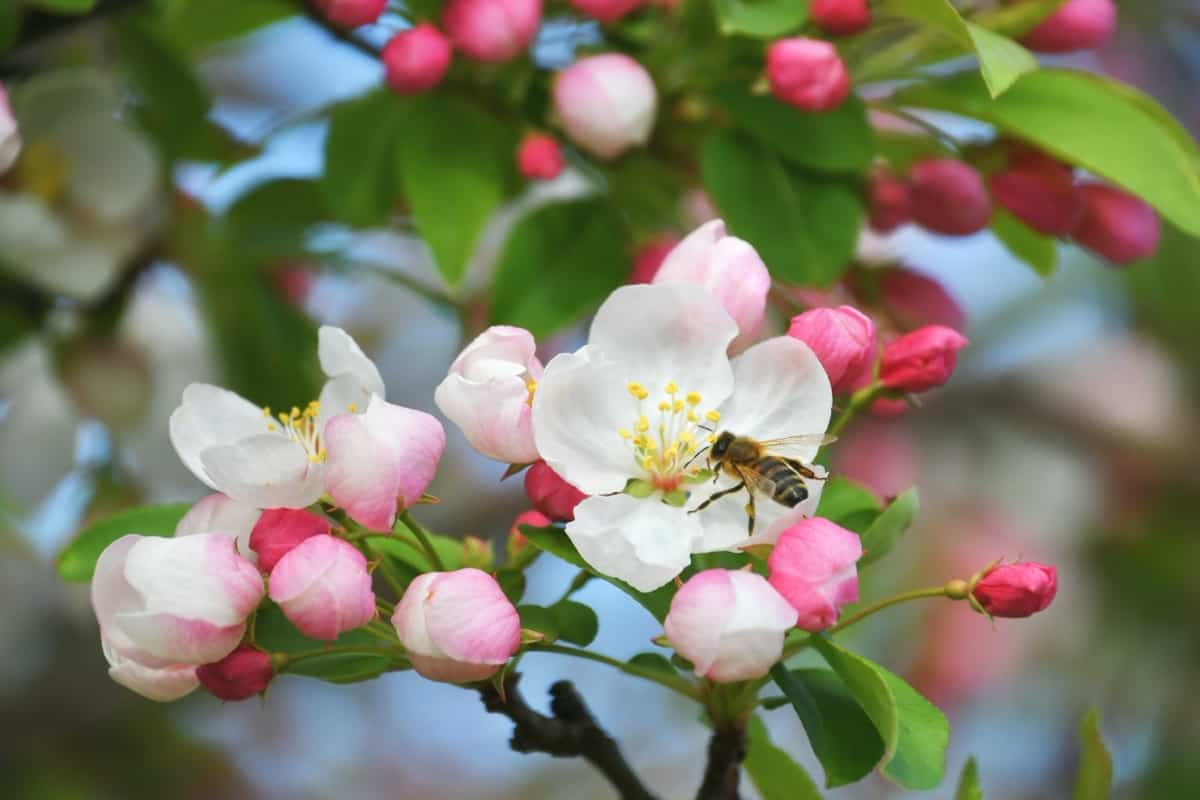
Apply the fertilizer around the tree’s base, avoiding direct contact with the trunk. Do water thoroughly after fertilizing to help distribute the nutrients into the root zone. Don’t over-fertilize your Crabapple trees, which can encourage excessive leaf growth. Don’t use high-nitrogen fertilizers, as they may promote excessive vegetative growth rather than flowering. Don’t apply fertilizer too close to winter when your tree enters the dormancy.
Pruning and Shaping Crabapple Trees for Optimal Growth
By careful pruning, you can help maintain the tree’s shape, promote better air circulation, and encourage the growth of new branches. How to prune a Crabapple tree? Removing any diseased branches using clean pruning shears. This will improve the tree’s appearance. Next, thin out crowded areas by selectively removing branches crossing or rubbing against each other. To shape your Crabapple tree, consider its natural form and desired aesthetic.
You can create a more open canopy by trimming some inner branches while leaving the outer ones intact. Alternatively, if you prefer a fuller look, prune less aggressively. When timing your pruning efforts, it’s generally best in late winter or early spring. However, avoid pruning during extreme cold, which may damage the tree. Over-pruning can stress the tree and reduce flower production in subsequent years. So, remember not to remove more than one-third of the foliage in a single season.
Preventing and Managing Common Pests and Diseases in Crabapple Trees
One of the most common pests that affect Crabapple trees is aphids. These tiny insects feed on the tree’s sap, causing leaves to curl and become distorted. To prevent an aphid infestation, regularly inspect your tree for signs of these pests and use organic insecticides or strong streams of water to remove them. Another pest you may encounter is spider mites.
These minuscule creatures thrive in hot, dry conditions and can cause yellowing leaves with fine webbing visible between branches. Regularly misting your tree’s foliage will help deter spider mites. Diseases like apple scab can also impact Crabapple trees. This fungal infection causes dark spots on leaves, which eventually turn yellow and fall prematurely.
Choose disease-resistant varieties when planting your tree to prevent apple scabs and ensure good air circulation by pruning any overcrowded branches. Fire blight is another serious disease that affects many fruit-bearing trees. It causes blackened shoots as well as oozing sap from infected areas. Pruning affected branches during dry weather conditions can help control their spread.
Enhancing Flowering and Fruit Production in Crabapple Trees
Ensure that your Crabapple tree receives ample sunlight. These trees grow well in full sun or partial shade conditions. Ensure no large structures or other plants are blocking the sunlight from reaching your tree. Proper watering is crucial for promoting healthy growth and abundant flowering. During dry periods, water is deep at the tree’s base to reach its root system. Fertilize your Crabapple tree appropriately during the growing season.
Use a balanced fertilizer formulated specifically for fruit trees. Apply it according to the instructions on the packaging, not exceeding the recommended amounts. Pruning plays a vital role in encouraging flower and fruit production, too. Regular pruning helps maintain an open canopy structure, which allows better air circulation and sunlight penetration throughout the branches. Prune selectively during late winter or early spring before new growth begins.
In case you missed it: How to Grow and Care for Crocosmia Flowers: A Step-by-Step Guide

Harvesting and Utilizing Crabapples from Your Tree
Once your Crabapple tree has borne its beautiful fruits, it’s time to reap the rewards. To determine if your Crabapples are ready for harvest, gently squeeze them. They are likely ripe and ready to pick if they feel firm and have a vibrant color. Be careful not to wait too long, as overripe fruit may become mushy or rot. When harvesting, use a pair of sharp pruning shears or garden clippers to cut each apple from the tree carefully. After harvesting, you can utilize these tart little treasures in numerous ways.
Winter Care Tips for Crabapple Trees
It’s important to properly care for your Crabapple trees in winter to ensure their health and vitality come springtime. While these hardy trees can withstand cold temperatures, extra attention protects them from harsh winter conditions. One crucial aspect of winter care is mulching around the tree’s base. Applying a layer of organic mulch helps insulate the soil, preventing temperature fluctuations that could harm the roots. It also acts as a barrier against weeds and moisture loss.
Another key consideration is watering. Although Crabapple trees are more tolerant of drought than other fruit trees, they still require adequate hydration throughout the winter. Be sure to water deeply before freezing temperatures set and continue to monitor soil moisture levels during dry spells. Pruning is generally best done in late winter or early spring. However, if you notice any dead or damaged branches during this time, removing them promptly is advisable to prevent further damage or disease spread.
Inspect the branches for signs of infestation or disease, such as scale insects or powdery mildew. If necessary, apply appropriate treatments following recommended guidelines. Consider sheltering young or newly planted Crabapple trees from heavy snowfall using supports like stakes or burlap wraps tied loosely around branches. This will help prevent breakage due to snow accumulation.
Transplanting or Moving Established Crabapple Trees
Transplanting or moving established Crabapple trees can be a delicate process, but with careful planning and execution, it is doable. First, choose an appropriate time of year for transplanting. The best time is during the dormant season in late fall or early spring, when the tree is less likely to experience stress from heat or cold.
Before digging up the tree, prepare the new planting site adequately. Choose a location with similar soil conditions and adequate sunlight for optimal growth. Dig a hole slightly larger than the tree’s root ball. To minimize shock during transplantation, carefully dig around the base of the Crabapple tree, taking care not to damage its roots. Gently lift and transfer it into a wheelbarrow or tarp for transportation to its new location.
In case you missed it: How to Grow Ranunculus (Buttercup): Propagation, Planting and Care
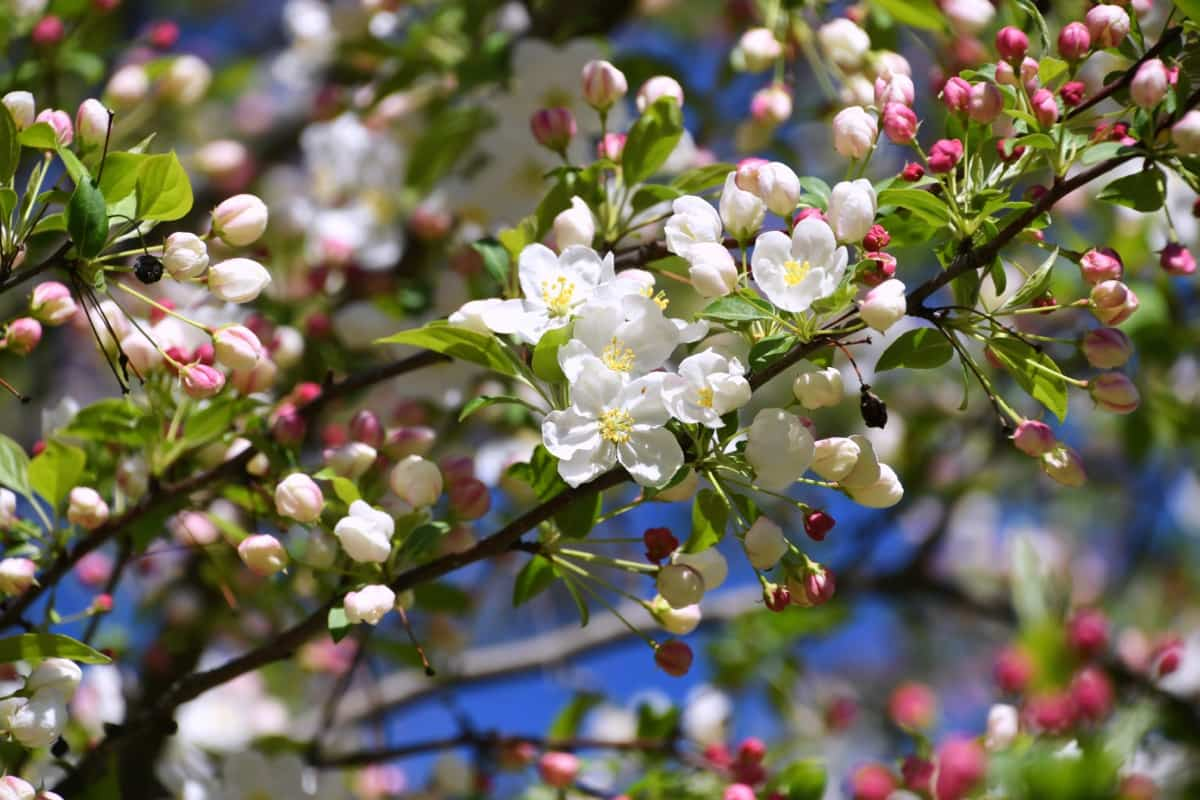
Once at the new site, place the tree in its designated hole to sit at approximately the same depth as before. Backfill with soil while ensuring no air pockets around the roots. Water thoroughly after planting to help settle any remaining soil and hydrate the roots. Mulching around the base of your transplanted Crabapple will also help retain moisture and protect against temperature fluctuations.
Troubleshooting Common Issues in Growing and Caring for Crabapple Trees
One common problem that Crabapple tree owners may encounter is pest infestations. These can include aphids, caterpillars, or spider mites. To combat these pests, it’s important to regularly check your tree for any signs of damage or infestation. If you notice an issue, consider using natural remedies like neem oil to control the pests without harming beneficial insects. Another challenge Crabapple trees face is fungal diseases such as apple scab or powdery mildew.
To prevent fungal infections, ensure proper air circulation around the tree by pruning away any dense branches or foliage. Improper pruning practices can lead to weak growth and susceptibility to disease in Crabapple trees. Overwatering or underwatering your Crabapple trees can also cause problems. It’s essential to provide regular watering during dry periods, but be careful not to overdo it, as excessive moisture can cause root rot. Crabapple trees require a balanced nutrient supply for healthy growth and fruit production.
Conclusion
Growing and caring for Crabapple trees can be a rewarding experience. These beautiful trees not only enhance the aesthetics of your garden but also provide an abundance of vibrant blooms and delicious fruit. Choose a suitable location for your tree, considering factors like sunlight exposure and soil drainage.
In case you missed it: 19 Stunning French Flowers That are Easy to Grow at Home
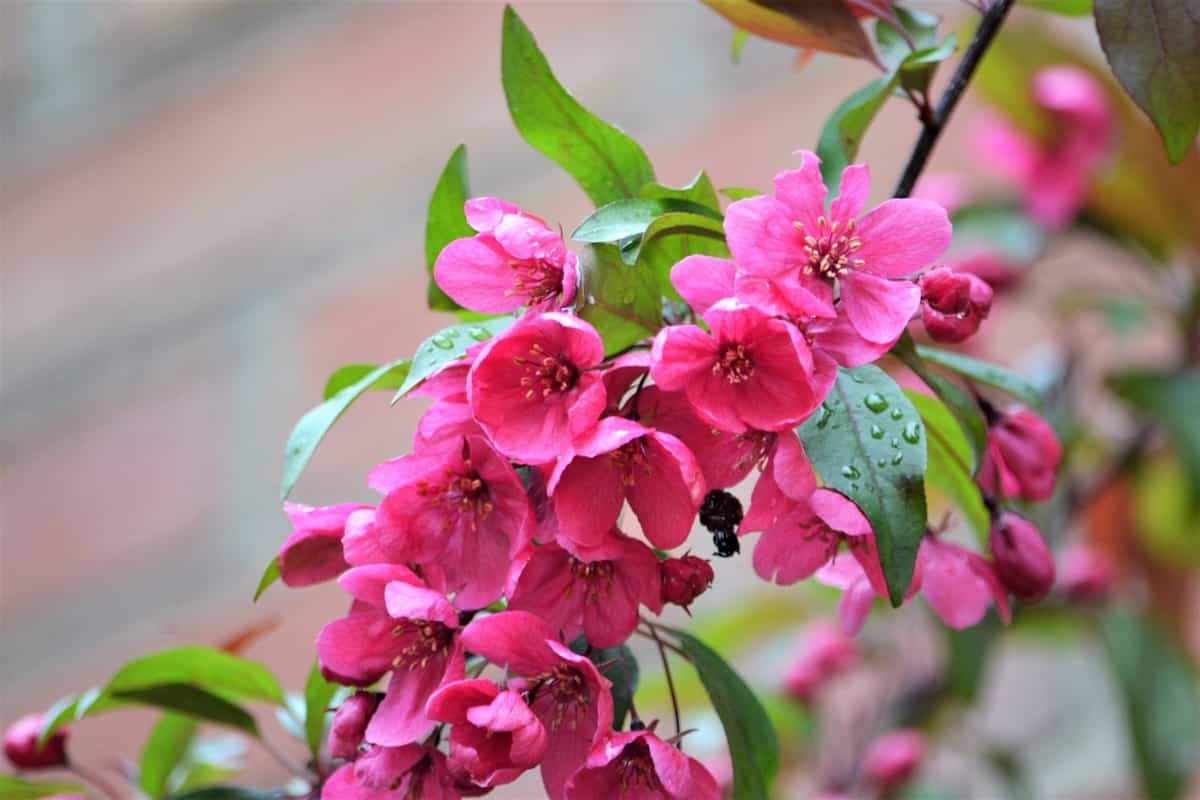
Crabapple trees are hardy but susceptible to certain pests and diseases like apple scab or cedar-apple rust. Look for any signs of trouble and take necessary measures to prevent or treat them promptly. When harvest time arrives, enjoy the bountiful crop of Crabapples by making jams, jellies, pies, or even infused spirits. Growing and caring for Crabapple trees requires effort, but it is well worth witnessing their beauty unfold throughout different seasons while enjoying their delightful fruits.
- Gongura Seed Germination and Planting Methods
- Cabbage Seed Germination and Selection
- Broccoli Seed Germination and Selection
- Asparagus Seed Germination and Variety Selection
- Seasonal Flower Gardening: Best Practices for Spring, Summer, Fall, and Winter
- How to Grow Hibiscus from Flower
- Plantation Ideas for Home Decoration: A Beginners Guide
- Flower Garden Designs and Layouts for Beginners
- Planting and Spacing Techniques in Papaya: A Beginner’s Guide
- Growing Gold: Essential Techniques for Planting Pineapples
- How to Make Kalanchoe Plant Bushy: Home Remedies and Solutions
- 11 Reasons Why Your Gardenia is Not Blooming: Home Remedies and Solutions
- Eco Elegance: The Guide to Designing a Drought-Tolerant Landscape
- Gardening on a Slope: Strategies for Hillside Landscaping
- Nourish and Flourish: Top Organic Mulches for Thriving House Plants
- Everything You Want to Know about Indian Mogra Flower: Discover Uses and Growing
- Green Thumb Success: Expert Tips for Cultivating Greenhouse Pumpkins All Year Round
- Maximize Growth & Flavor: The Ultimate Guide to Companion Planting in Herb Gardens
- How to Control Rhododendron Problems Naturally: Home Remedies and Organic Ways to Fix Them
- Natural Magic: The Remarkable Benefits of Cinnamon for Plants
- Best Steps to Revive Dying Tulip with Natural and Organic Treatment
- 10 Reasons Why Your Angel Trumpet is Not Blooming: Remedies and Treatment
- How to Fix Periwinkle Leaf and Flower-Related Problems: Natural Remedies and Solutions
- How to Fix Zinnias Leaf and Flower Problems: Discover Natural and Home Remedies
- Organic Steps to Induce Lemon Tree Flowers: A Comprehensive Guide
- Bloom Booster: Crafting the Perfect Homemade Bougainvillea Fertilizer
- Optimizing Growth: A Guide to Applying NPK Fertilizer for Potted Plants
- 10 Best Homemade Fertilizers for Rubber Plant: DIY Recipes and Application Method
- How to Boost Female Pumpkin Flowers: Effective Steps for More Flowers and High Yields
- Transform Your Indoor Garden: Top Benefits of Pink Salt for Houseplants
- 10 Best Homemade Fertilizers for Peacock Plants (Calathea): Easy DIY Guide
- Unlock Blooms: 9 Reasons Why Your Potted Chrysanthemum is Not Blooming
- 8 Reasons Why Your Potted Hibiscus is Not Blooming: Fix it with Simple Solutions
- Unlock Blooms: 9 Key Reasons Your Potted Frangipani Won’t Flower
- 10 Reasons Why Is My Ice Plant Not Blooming: Remedies and Treatment
- 10 Reasons Why My Potted Hydrangea Not Blooming: Treatment and Remedies